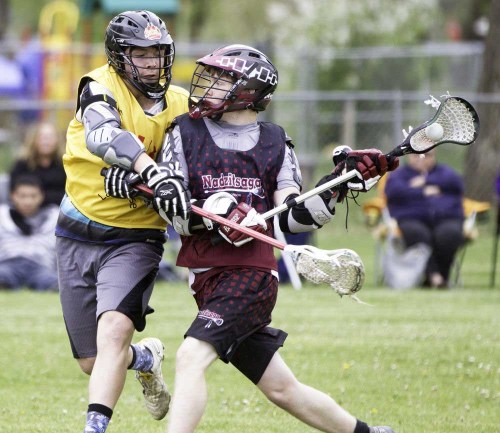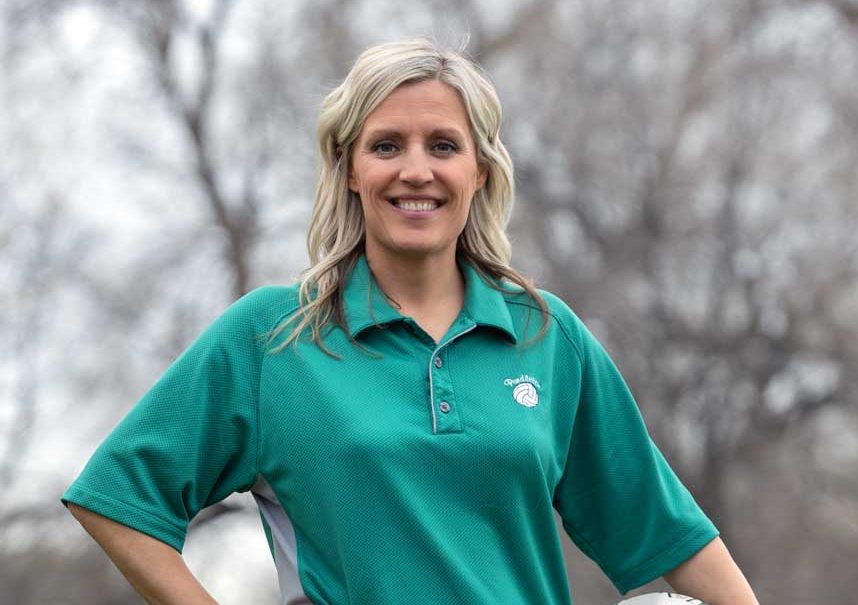Lacrosse comes home
Published 9:06 am Monday, May 5, 2014

- <p>The CTUIR lacrosse team played its first home game ever on Saturday in Mission against a team from Burns. The game, invented by American Indians centuries ago, was once played in huge open areas with goals sometimes miles apart.</p>
The lacrosse game exploded to life Saturday about noon.
Most of the teenage players had passion, but plenty of rough edges to hone before they could dream of any sort of championship. Yet several notables in the lacrosse world had come to watch them play. A crowd had gathered. Someone in a nearby yard listened the play-by-play on the tribal radio station.
This was the first home game ever for the Xalish (Wolf Pack), which represents the Confederated Tribes of the Umatilla Indian Reservation. They faced off against the Nadzitsaga team of Burns at the July Grounds on the Umatilla Indian Reservation.
Though some might believe lacrosse was born on an Ivy League field, they would be wrong. Lacrosse, the oldest sport in the country, was first observed being played by Native Americans in 1637, though the game is possibly hundreds of years older.
Over the centuries, the game evolved to something that is played inside white lines by athletes with plastic sticks, cleats and helmets.
It didnt start that way.
At one time, players werent confined by sidelines. They played on huge fields with goals that might be miles apart from one another.
I cant imagine what the first visitors here were thinking when they saw hundreds of men running around fields with sticks, said Cam Bomberry, who refereed Saturdays game. Bomberry coaches the Iroquois Nationals, a team that has a shot at winning the world lacrosse championships in Denver this year. Bomberry grew up playing lacrosse. So did his father, grandfather, great-grandfather and so on. Bomberry, a member of the Mohawk Nation, played professionally for eight years.
Despite his star-studded resume and crazy schedule, he carves out time to spend with Native American youngsters, trying to grow the game. Bomberry came to the reservation in 2012 from his home at the Six Nations Reserve near Ontario, Canada, to put on a clinic. With fellow coaches John Meade and Richard Roy, he left a bunch of balls and sticks. This was the second time they had come back to water those seeds they had planted.
Bomberry wasnt the only lacrosse luminary of the day. Roman Bitsue, a Navajo who played lacrosse at Princeton in the 70s, watched from the sidelines. He said the game is coming back home to native tribes and thats good. He called lacrosse the fastest sport on two feet and called it more than just a game.
Its a game that the Creator made for the people, Bitsue said. Its a way of communicating with the Creator and a way of resolving conflict.
Saturdays game started with drumming and a prayer. Then spectators in lawn chairs or lounging on the grass watched the teams, each with one female player on the roster, butt heads on the field. The action was fast and physical, though Burns steadily pulled away. At halftime, they swapped goalies to make it a closer contest.
Mark Donahue, editor/writer for the online magazine Lacrosse All Stars, stood on the sidelines with a video camera on his shoulder. He could have gone to a more high-powered regional event in Seattle this day, he said, but felt pulled to watch these fledgling players. Donahue isnt native, but he said he cant imagine lacrosse separating from Indian Country.
This is the future of the sport, Donahue said, waving his hand out toward the players. Lacrosse cant lose its native roots this is more important to the sport in the long run.
Xalish Coach Robby Bill started overseeing the program after Bomberrys original visit and has watched interest in the sport bloom.
You could really feel the energy out there, he said.
He smiled to see younger kids carrying lacrosse sticks and running onto the field at halftime to play. Seeing such a large crowd on the sidelines made his heart sing.
I was blown away by the community support, he said. The kids really felt it.
Bills 19-year-old son Weyekin started playing on the team when friends persuaded him to give it a try. He said he loves the teamwork and the athleticism.
Its a mixture of sports basketball, soccer, running and football, he said. You have to manage the stick and the ball. You have to learn the cradle (moving hands side to side to keep the ball in the pocket).
Weyekin, a senior at Pendleton High School, also appreciates the spiritual aspects.
We dont take breaks, he said. We play hard for the Creator.
Bomberry expects more American Indians to reconnect with the game of lacrosse.
Its ingrained in us, he said. Its who we are.
Contact Kathy Aney at kaney@eastoregonian.com or call 541-966-0810.




